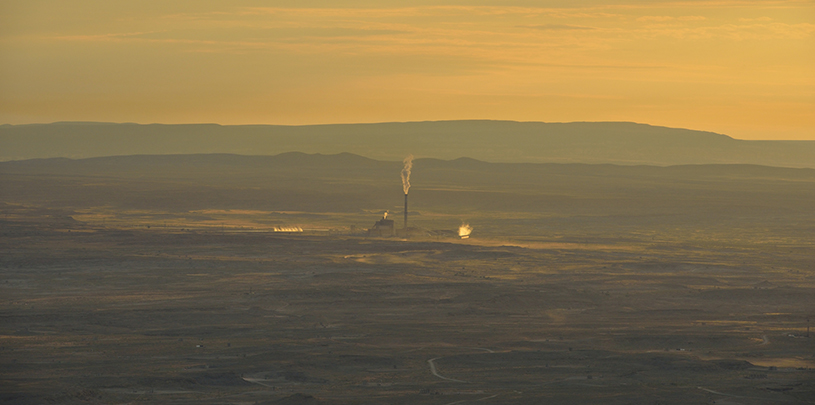
 by Anne Mariah Tapp, Energy Director
by Anne Mariah Tapp, Energy Director
Have you ever driven to the Grand Canyon on a hazy day, knowing the Vermilion Cliffs are ahead, but not quite able to pick them out? Or trying to see the San Francisco Peaks, straining to locate familiar landmarks, and sighing? On a better day, the majesty, color, breadth, and sharpness of the canyon’s landscape would truly be on display, but not today.
Arizona is the Grand Canyon State. People come from across the globe to visit this natural wonder, right here in our backyard. Yet too often, air pollution from coal-fired power plants disrupts the breathtaking scenery. On a hazy day, views of the canyon can be cut from 120 miles to just 78. When skies at the park are most polluted, visitors can barely see the stunning vistas across the canyon. And the same sources of pollution that deteriorate views affect the respiratory health of visitors and park staff, negatively impact wildlife and ecosystems, and accelerate climate change that is already harming our national parks.
The problem stretches across the Colorado Plateau. Regional haze regularly muddies visibility and threatens the air we breathe at Utah’s iconic national parks, including Arches, Bryce Canyon, Canyonlands, Capitol Reef, and Zion. Man-made regional haze is even diminishing Utah’s wilderness and wilderness study areas – places set aside forever “where the earth and community of life are untrammeled by man, where man himself is a visitor who does not remain.”
These extraordinary places drive the Colorado Plateau’s economy. In Utah, the state's national parks logged nearly 12 million visits last year, adding $1.3 billion to Utah's economy and supporting 14,400 jobs. At the Grand Canyon alone, tourism added over $813 million in local economic benefit and brought over 8,800 jobs to Arizona. Keeping the views clear, and the air clean, every time we #FindAPark this summer should be a no-brainer.
The EPA’s Regional Haze Rule is a key solution to this problem. The Regional Haze program sets a national goal of clear, natural views in national parks and wilderness areas so visitors may take in the magnificent vistas while breathing clean air. The EPA first adopted the Regional Haze Rule in 1999 with a national goal of eliminating human-caused haze in national parks and wilderness areas by 2064. The rule requires states to adopt enforceable plans to limit haze-causing pollution from power plants, factories, and other sources. While the Regional Haze Rule has helped visibility tremendously, we are still far from the goal of eliminating human-caused haze in national parks and wilderness areas.
Recently, the EPA released a proposal to clarify and update the Regional Haze Rule. The EPA’s goal is to provide greater clarity to states about how and when to act to protect clean air in our national parks and wilderness areas. We welcome a stronger Regional Haze Rule that requires measurable and timely pollution reductions.
The EPA has done a great job in many ways. But the EPA’s updates also include provisions that would weaken the program in the following ways:
The EPA is accepting comments on its proposal until July 5, 2016. The Colorado Plateau’s national parks and wilderness areas need your voice on this #nps100 centennial!
Leave A Comment